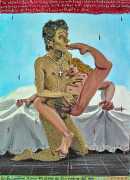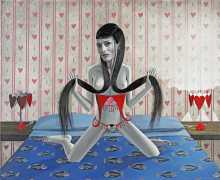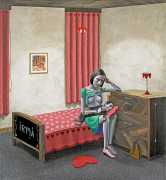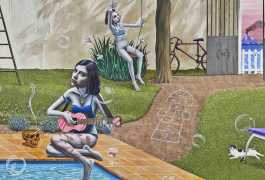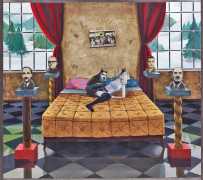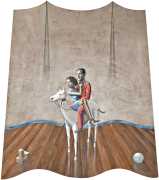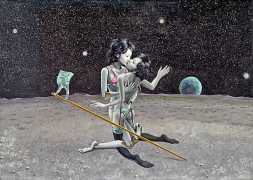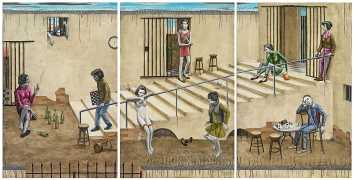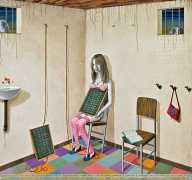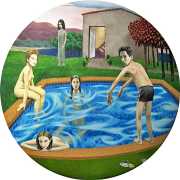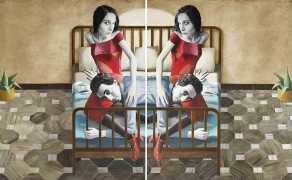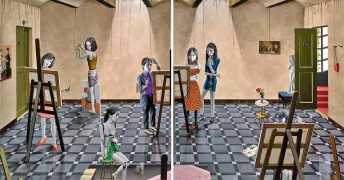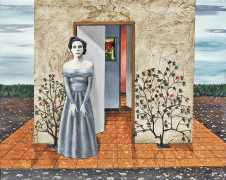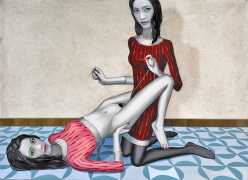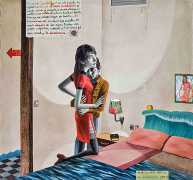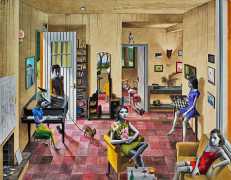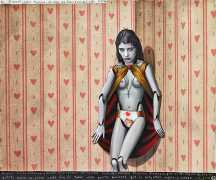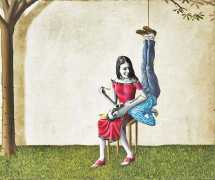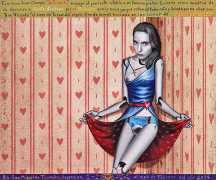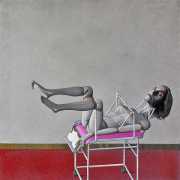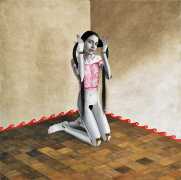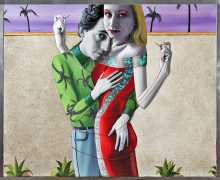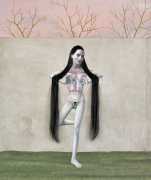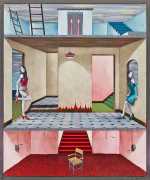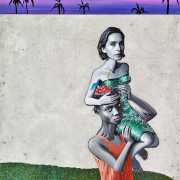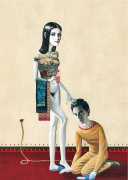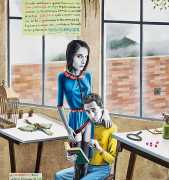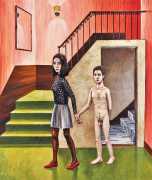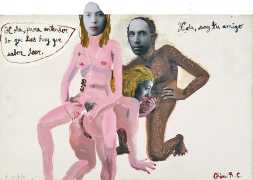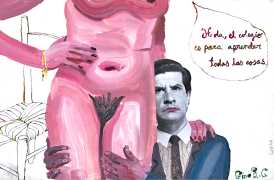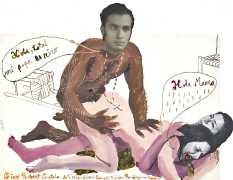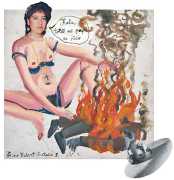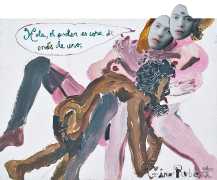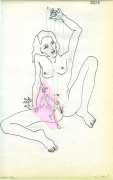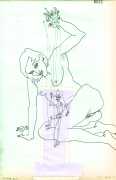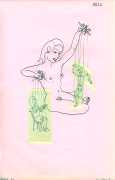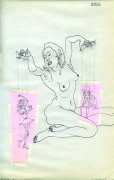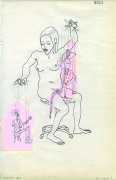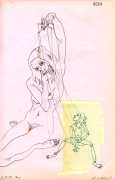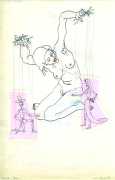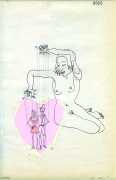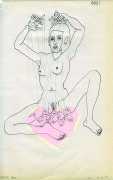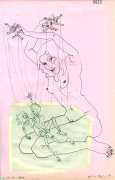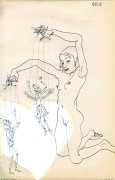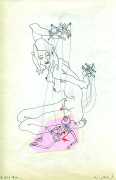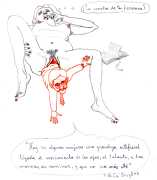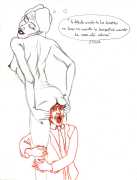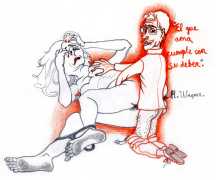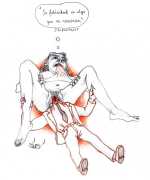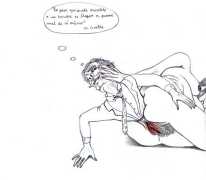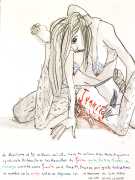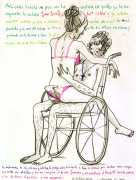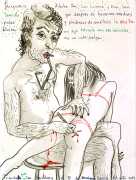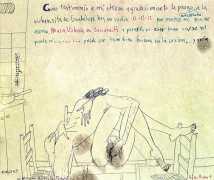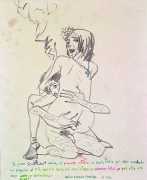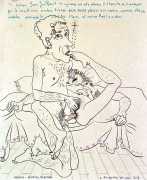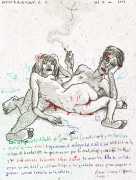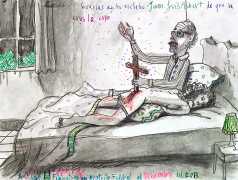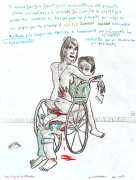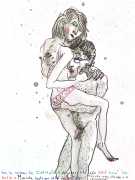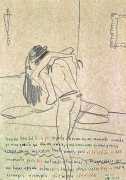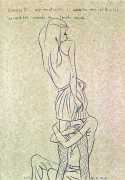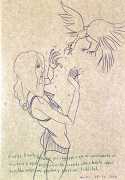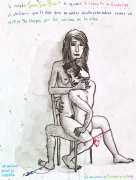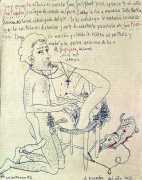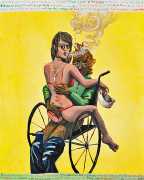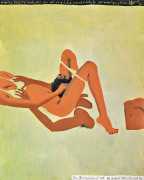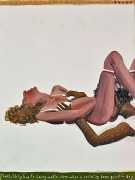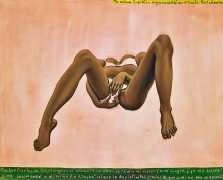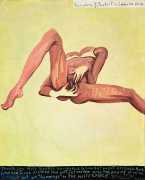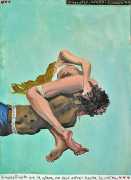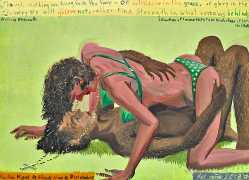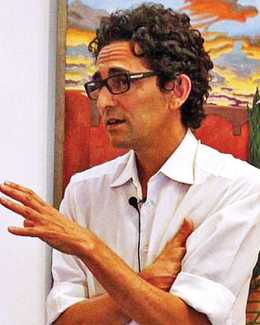 Since 1995 Gino Rubert, who grew up in Mexico City and now lives and works mostly in Barcelona, has incorporated collage into figurative painting in a highly personal style, part humorous, part spectral, especially in the grey, photographic faces of his characters, but also in other elements – clothes or interior décor, which combine the everyday and the bizarre, sometimes the psychedelic.
Since 1995 Gino Rubert, who grew up in Mexico City and now lives and works mostly in Barcelona, has incorporated collage into figurative painting in a highly personal style, part humorous, part spectral, especially in the grey, photographic faces of his characters, but also in other elements – clothes or interior décor, which combine the everyday and the bizarre, sometimes the psychedelic.
Right from the start he painted everyday locations as if they were theatre sets inhabited by fictional characters, and also incorporated narrative into his paintings, or at least the sketch of a narrative. He did this at a time when the mere intention of painting a figurative, narrative picture might be considered an unforgiveable aesthetic sin by the dominant forces in contemporary art.
But Rubert also had the audacity to revive something Sigmund Freud had begun much earlier: the observation and analysis of behaviours humans would prefer not to admit to, generally relating to sexual desire, repression and the desire for power over others. Rubert gradually refined his observational method to shine a spotlight on our current, postmodern, circumstances, to focus on and attack the new hypocrisies of the present, and has continued to do so, bringing to the task his meta-realist imagination and a lightly comic tone.
As he writes on his website, which you will find here, ‘My work responds to two personal concerns. On the one hand there’s the need to represent the world around me, in an effort to somehow understand it and keep it at a healthy distance; hence the irony, the humour, the magical atmosphere. On the other hand there’s a desire to desacralise the creative act, and the artwork itself, by presenting it in a rather prosaic and profane way. The photography portraits have been long present in my work. I think this has to do with a certain obsession about death, and how it gazes at us from other people’s eyes. By transforming and relocating these faces in new roles and settings, I’m playing with the idea of bringing the dead back to life.’
We are very grateful to our Russian friend Yuri for introducing us to the work of this artist, and for supplying most of the images.

